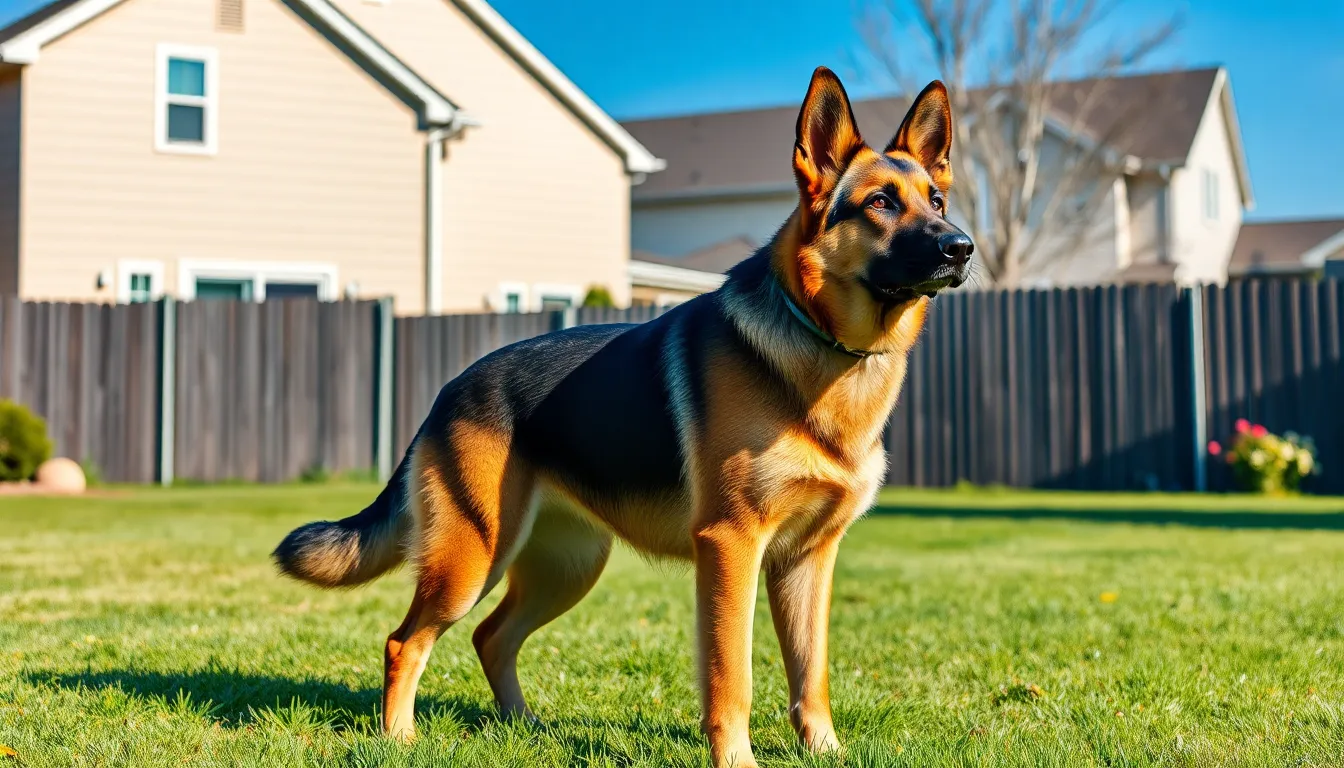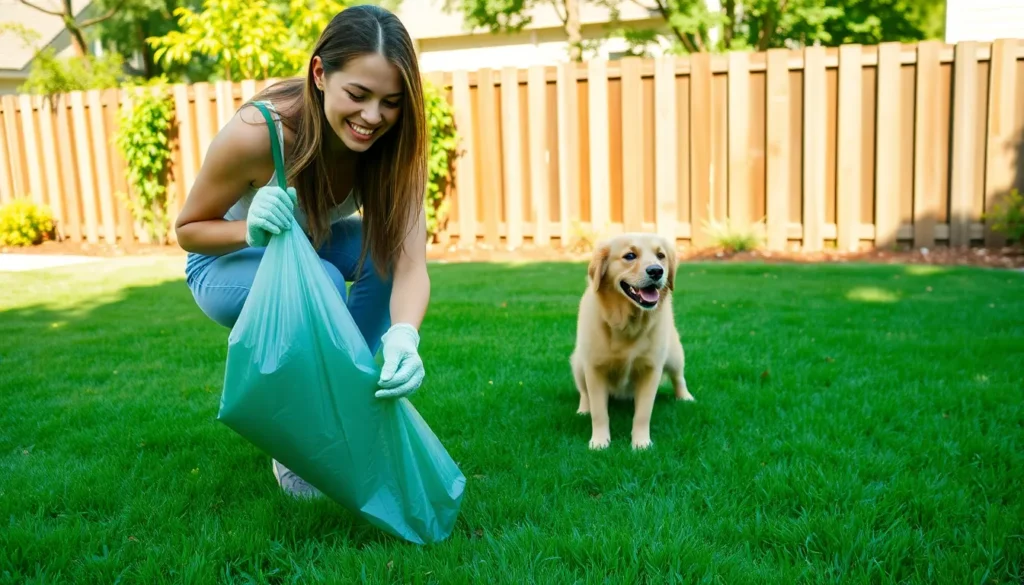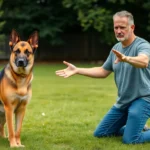Training a guard dog is more than just teaching commands; it’s about building a strong bond and instilling confidence. A well-trained guard dog not only protects its home and family but also acts as a loyal companion. Understanding the unique traits of different breeds can significantly impact training success, making it essential to choose the right dog for the task.
Effective training techniques can transform any dog into a reliable protector. From basic obedience to advanced guarding skills, each step requires patience and consistency. With the right approach, owners can cultivate a dog that’s not only vigilant but also well-mannered. Whether you’re a first-time dog owner or an experienced trainer, learning how to train a guard dog can provide peace of mind and enhance the safety of your environment.
Table of Contents
ToggleImportance Of Training A Guard Dog
Training a guard dog involves essential skills that enhance safety and security. A well-trained guard dog provides not only protection but also companionship. Training builds confidence in dogs, enabling them to respond effectively to potential threats.
Understanding the traits of different breeds ensures the selection of an appropriate guard dog. Certain breeds, such as German Shepherds and Rottweilers, exhibit natural guarding instincts. Proper training exploits these instincts while teaching obedience.
Effective training techniques range from basic commands like sit and stay to advanced skills such as identifying intruders. Consistent practice fosters discipline and reinforces learned behaviors. Incorporating socialization into training helps the dog become comfortable in various environments, reducing fearfulness.
The bond formed between the dog and its owner during training promotes loyalty and trust. A confident dog reacts calmly in stressful situations, offering better protection. Owners benefit from a well-mannered guard dog, enhancing their peace of mind.
Investing time and effort into training a guard dog yields high rewards, leading to a reliable guardian and a cherished family member.
Key Characteristics Of A Good Guard Dog

A good guard dog possesses several key characteristics that enhance its ability to protect and serve. Understanding these traits guides the training process and ensures effective performance in the role of a guardian.
Temperament
Temperament plays a crucial role in a guard dog’s effectiveness. Characteristics include:
- Alertness: A good guard dog remains vigilant and aware of surroundings, quickly noticing unusual activity.
- Confidence: Confidence enables a guard dog to stand its ground in threatening situations without displaying fear.
- Loyalty: Loyalty strengthens the bond between the dog and its owner, motivating the dog to protect their loved ones.
- Trainability: A dog that is eager to learn responds well to commands and can master various tasks, making training more efficient.
- Assertiveness: Assertive behavior ensures the dog can respond appropriately to intruders and challenges while maintaining control.
Breed Selection
- Natural Instincts: Some breeds, such as German Shepherds and Rottweilers, exhibit strong protective instincts that enhance their guarding capabilities.
- Size and Strength: Larger breeds may deter intruders simply through their presence, while also possessing physical strength to defend effectively.
- Energy Levels: High-energy breeds can maintain active vigilance and respond quickly to threats, making them suitable for guarding.
- Temperament Matching: Selecting a breed with a temperament that aligns with the owner’s lifestyle ensures better compatibility and training outcomes.
- Socialization Needs: Breeds requiring extensive socialization may adapt better in family settings, allowing them to differentiate between friends and threats.
Steps To Train A Guard Dog
Training a guard dog includes mastering basic obedience and deploying advanced guard techniques. These steps foster a well-rounded protector capable of responding appropriately to various situations.
Basic Obedience Training
- Establish commands: Teach essential commands like sit, stay, come, and heel. Consistency with commands reinforces learning.
- Use positive reinforcement: Reward desired behaviors with treats or praise. This approach encourages the dog to repeat good behavior.
- Practice regularly: Short, frequent training sessions enhance retention. Aim for 5-10 minute sessions, several times a day.
- Socialize with exposure: Introduce the dog to various environments, people, and animals. This reduces fear and promotes confidence.
- Reinforce discipline: Correct undesirable behavior immediately. Use firm redirects rather than punishment to guide behavior.
Advanced Guard Training Techniques
- Teach protection skills: Introduce bite work using a bite sleeve. Ensure the dog understands when to engage and when to release.
- Simulate intruder scenarios: Create controlled situations where an intruder enters the space. Observe the dog’s reaction to reinforce appropriate guarding behavior.
- Incorporate commands: Use specific commands during scenarios, such as “watch” or “attack.” This teaches the dog to distinguish between threats and non-threats.
- Practice under distractions: Train in environments with noise and movement. This helps the dog remain focused on its duties despite distractions.
- Assess and adapt: Continuously evaluate the dog’s response and adjust training methods as needed. Adaptations ensure effective learning and strengthen skills.
These steps facilitate a robust training regimen, promoting both obedience and advanced guarding abilities in a dog.
Common Challenges In Guard Dog Training
Training a guard dog presents various challenges that can impact effectiveness. Addressing these challenges promptly ensures a more successful training process.
Behavioral Issues
Behavioral issues can significantly hinder guard dog training. Problems like fearfulness, aggression, or distraction may arise during training sessions.
- Fearfulness: Some dogs exhibit anxiety in new environments or around unfamiliar people. This anxiety can prevent them from focusing on training. Gradual exposure to various situations helps build confidence.
- Aggression: While a guard dog must show protective instincts, uncontrolled aggression can lead to dangerous situations. Proper socialization with different dogs and people helps temper aggressive tendencies.
- Distraction: Guard dogs may lose focus due to external stimuli, such as noise or other animals. Consistent training sessions in diverse environments can improve concentration.
Environmental Factors
Environmental factors also play a crucial role in guard dog training. A dog’s surroundings can influence its learning potential and overall behavior.
- Space: Adequate training space is essential. Restricted areas limit movement and exploration, hindering engagement during sessions. A spacious and safe environment encourages active participation.
- Distractions: Neighboring noise or busy streets can disrupt focus. Relocating training sessions to quieter areas reduces distractions, allowing for better concentration.
- Weather Conditions: Extreme weather, such as high heat or cold, can affect a dog’s performance and motivation during training. Training in moderate conditions improves the dog’s willingness to engage.
Addressing these common challenges fosters a more effective guard dog training experience, which leads to a loyal and protective companion.
Training a guard dog is a rewarding journey that strengthens the bond between owner and pet. With patience and dedication it’s possible to cultivate a dog that not only protects but also enhances the family’s overall well-being. Understanding the unique traits of different breeds and employing effective training techniques ensures success in developing a reliable guardian.
By focusing on consistent practice socialization and proper reinforcement owners can overcome common challenges and create a confident and disciplined companion. Ultimately the investment in training pays off with a loyal protector who brings peace of mind and security to the home.








